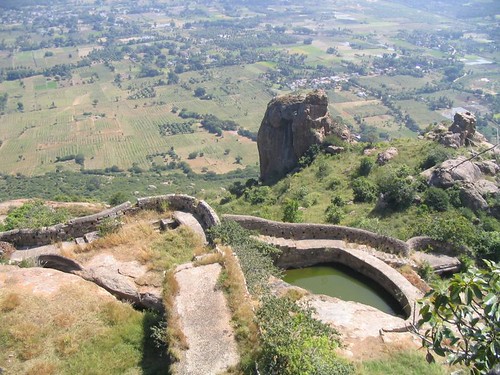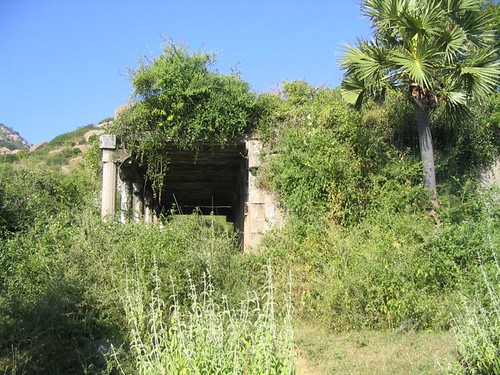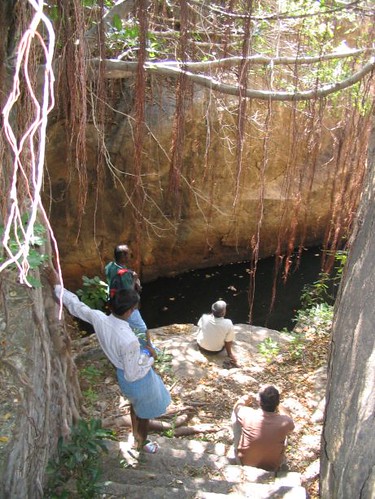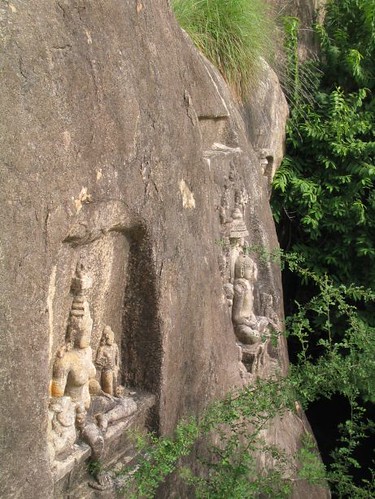Hill-top Fort, Vellore
These friends of my father's have been visiting local historical sites for many years now, and my father has joined them on a few. They acted as our guides for this trip and told us that this is only one of about 25 forts in the Vellore area. I was aware, of course, of the main Vellore Fort (built by the Vijayanagaras in the mid 1500s), and the hill-top fort (built by Shivaji ?) on that nameless hill east of Vellore, but was completely unaware of the other ones.
They lead us from the village, through the fields, presumably towards the top of the hill. Suddenly, at the base of the hill, there appeared a stone structure covered in greenery.
It appeared exactly like you'd imagine the ruins of a long-abandoned building would. Except it was in very good condition. It was a little pillared hall (mandapam). The pillars were carved with floral,religious and other imagery. Also notable was the apparent absence of cement or other kinds of bonding material, and how the extremely straight edges of the stones fit perfectly against each other.
The path up the hill is very thorny. Ezhumalai (guy from the local village) who very generously lead us up the hill clearing the way with his sickle, told us that until recently the face of the mountain was fairly bare. The forest service planted these thorn bushes to make it look more green. Closer to the top of the hill are man-made steps and walls --- presumably built to improve access to the fort.
The fort at the top of the hill has a few concentric layers of walls, most of which are in great condition. Along the walls of the fort are a few doorways. Though they're missing the actual doors, the cavities for the door-posts still exist. We made our way through one of these door-less doorways into the fort. Inside the fort are a few surviving structures - a pillared hall and entrance-way, and a storage room (occupied by bats) with almost no light (known, appropriately, as 'irrutu(darkness)-mandapam'. Other examples of the carvings within the fort are this carving of Hanuman (?), two figures on a pillar, and this carving above a doorway showing two battling warriors --- one on a horse and another on an unidentified animal.
Our (amateur) guides weren't certain of the age of the fort ---- if it was from the time of the Pallavas (who ruled from Kanchipuram from the 4th to 9th centuries), Cholas (who ruled from Thanjavur until the 13th century) or the Vijayanagaras (who ruled from Karnataka starting in the 14th century). They pointed to signs indicating that it might be more than a thousand years old --- such as certain distinctive engravings on the wall, and the presence of these flat long bricks (supposedly used by the Pallavas). I'm not convinced that it's that old. I'd be curious to get a dating from a more authorative source (leave a comment if you are one).
All of these photos can be seen here or here as a slideshow.





0 Comments:
Post a Comment
<< Home